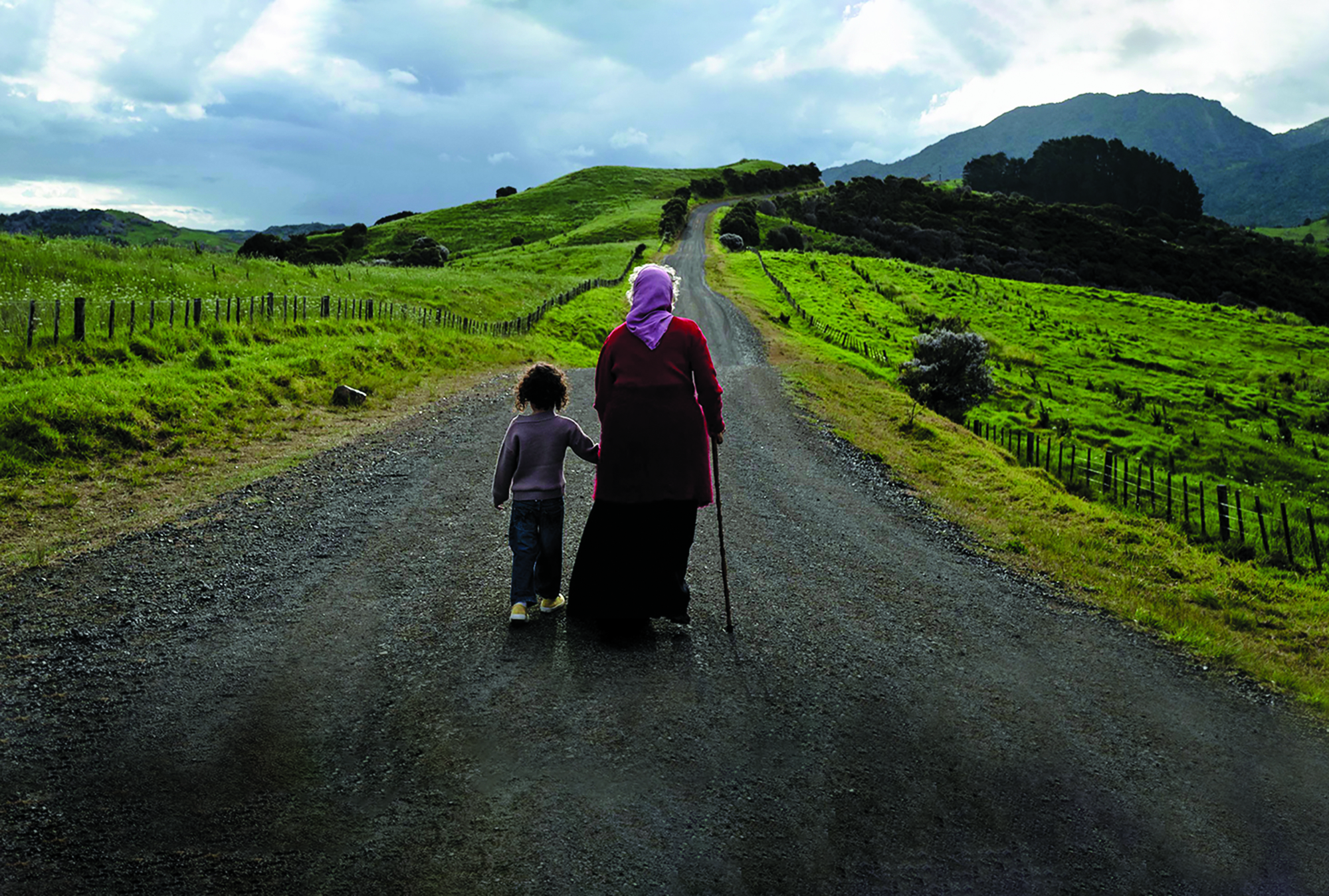Whina Cooper occupies an unconventional space in Aotearoa’s national memory. For many, she is an icon who spent decades tirelessly advocating for Māori rights; to large swathes of New Zealand’s population, however, her deeds remain unknown. Thanks to Whina (James Napier Robertson & Paula Whetu Jones, 2022), a new film that dramatises her life, however, many more Kiwis – as well as viewers from around the world – have the opportunity to learn about one of Aotearoa’s most important figures.
Cooper’s singular story is told in conventional biopic form.Robertson and Jones’ film doesn’t push the boundaries of the genre, and doesn’t need to; the revolutionary choice of subject and the rendering of her remarkable feats and complex personality collectively make for an engrossing narrative on their own. The movie seamlessly weaves between two main timelines – the first, focusing on Whina as an elderly woman (Rena Owen) as she leads the historic Māori land march of 1975; and the second, running from her birth, when she was mistaken for a boy, to her teenage years and adulthood (played in those passages by Tioreore Ngatai-Melbourne and Miriama McDowell, respectively) – revealing how Cooper came to be known as Te Whaea o Te Motu, or ‘The Mother of the Nation’.[1]This was the title conferred on her by the Maori Women’s Welfare League in the late 1950s; see Michael King, ‘Cooper, Whina’, Te Ara – The Encyclopedia of New Zealand, 2000, <https://teara.govt.nz/en/biographies/5c32/cooper-whina>, accessed 27 July 2022.
The daughter of Heremia Te Wake, a leader of the Ngāti Manawa people, Cooper displayed leadership abilities from a young age, but did not become a national figure – at least, outside of Māoridom – until the 1975 demonstration. The march, or hīkoi, which began at the top of the North Island in Te Hāpua, saw its participants travel on foot over 1000 kilometres to parliament in Wellington. As Cooper biographer Michael King explains, the goal of the land march was ‘to dramatise Māori determination to retain their land and culture, and to galvanise Māori and Pākehā support’.[2]ibid. At the head of the march was Cooper, and the image of the almost eighty-year-old woman hand in hand with her granddaughter Irene, with the land stretching out before them, has become an indelible part of Aotearoa’s collective memory.[3]See Virginia Winder, ‘How I Got the Shot: Whina Cooper and the Image That Became Iconic’, Stuff.co.nz, 20 August 2022, <https://www.stuff.co.nz/taranaki-daily-news/news/300665840/how-i-got-the-shot-whina-cooper-and-the-image-that-became-iconic>, accessed 12 December 2022. As a result of the considerable amount of media coverage the march generated, Cooper became – and would remain for the rest of her life – a popular national figure. Historian Karen Fox observes that, in her later years and following her death in 1994 at the age of ninety-eight, Cooper was often depicted in the mainstream press as ‘an elderly woman cherished by the whole nation’ and a ‘reassuring symbol’ of New Zealand’s race relations, with her staunch advocacy of Māori land rights consequently often being sidelined.[4]Karen Fox, Māori and Aboriginal Women in the Public Eye: Representing Difference, 1950–2000, ANU E Press, Canberra, 2011, p. 143.
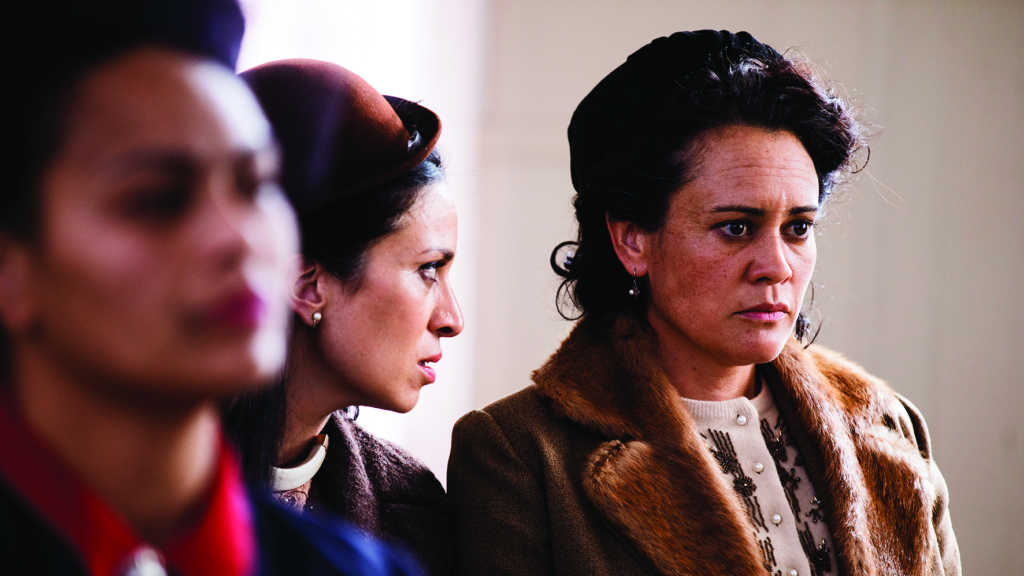
By shifting focus back to this aspect of Cooper’s life, Whina offers an opportunity to restore her legacy as a driven and spirited Māori leader. The biopic is a disparaged genre, often critiqued for presenting hagiographic interpretations that simplify and fictionalise their subjects.[5]See Karen Hollinger, Feminist Film Studies, Routledge, London & New York, 2012, pp. 158–9. Yet these films also have the capacity to shape collective memory. As critic Karen Pickering puts it, ‘Biopics are a powerful tool for consciousness-raising and myth-making that national cinemas have long relied on to intervene in public understandings of events.’[6]Karen Pickering, ‘Australia’s Sons: Looking for Women in Australian Biopics’, Metro, no. 181, Winter 2014, p. 89. Accordingly, the question of whom is considered deserving of this big-screen treatment reveals much about a nation’s values and how its history is remembered at any given point in time.
While a number of notable New Zealand women (particularly literary figures) have been portrayed on screen, there has long been a dearth of biographical films centred on Māori subjects.[7]For an overview of New Zealand’s female-focused literary biopics, see Hilary Radner, ‘Screening Women’s Histories: Jane Campion and the New Zealand Heritage Film, from the Biopic to the Female Gothic’, in Alistair Fox, Barry Keith Grant & Radner (eds), New Zealand Cinema: Interpreting the Past, Intellect, Bristol, UK, 2011, pp. 257–75. ‘We have no biopics,’ Jones explains, ‘and we’ve had so many amazing Māori leaders […] It’s just really cool that the first one that we make is about an eighty-year-old woman.’[8]Paula Whetu Jones, in ‘[Film Interview] Whina: Paula Whetu Jones Interview’, Subculture Media, 29 June 2022, <https://subcultureentertainment.com/2022/06/film-interview-whina-paula-whetu-jones-interview/>, accessed 24 July 2022. This is not another film about a ‘great man’, nor about a monarch or an artist (historically the preferred subjects for female-centred biopics); rather, this is the story of a passionate and flawed wahine who devoted her life to fighting for her people. As such, Whina is part of a larger shift in how Aotearoa acknowledges and commemorates its past.
The film’s 1975 sequences, set during the month-long land march, provide its backbone and a way to anchor the narrative. In order to embody this iteration of Cooper, Owen spent months perfecting her crooked smile and hunched stance, as well as the way she spoke.[9]See Myjanne Jensen, ‘New Zealand Screen Legend Talks About Her New Movie, Whina’, The Northland Age,23 June 2022, <https://www.nzherald.co.nz/northland-age/news/new-zealand-screen-legend-talks-about-her-new-movie-whina/MXDDHPURLES7SIW6OPRO7IZZFY/>, accessed 1 August 2022. Her endeavours were successful: upon Owen’s first appearance – a close-up as she stares directly into the camera – the women sitting in front of me in the theatre cooed over how she looked ‘just like’ Cooper. This ‘kind old lady’ exterior belies Whina’s wit, savvy and steeliness, traits that Owen also captures in her performance. As she marches down the North Island, she delivers impassioned speeches to local leaders, encouraging them to sign the memorial of rights that will be presented to the Prime Minister. At her advanced age, she suffers no fools, and people who don’t do things her way are sent packing; this character trait is amply demonstrated in a scene in which Whina finds some of the younger marchers relaxing with drinks and, upon receiving lip from one of them, responds by dismissing her from the hīkoi.
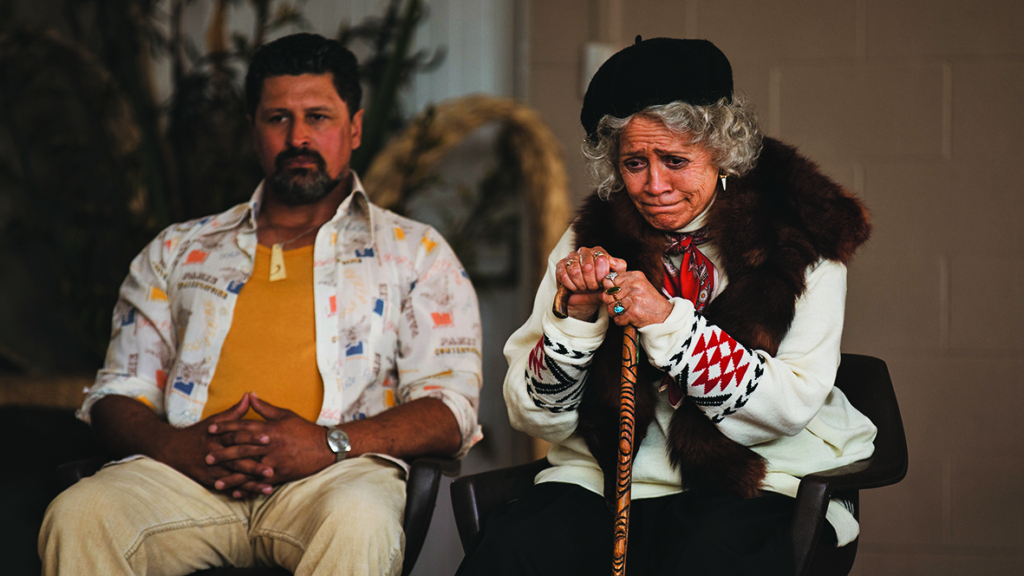
Cooper’s autocratic approach to leadership was something that caused tension within the groups and movements she was a part of.[10]See King, op. cit. In the film’s earlier timeline, those rogue tendencies cost Whina her role as head of the Māori Women’s Welfare League. This aspect of her character is presented neutrally; she never comes across as a one-dimensional hero, villain or martyr. The film gives us space to sympathise with the people she clashes with, even as it suggests that Cooper’s leadership style was exactly what was needed at times to get things done.
The most dynamic sequences of the film are those featuring McDowell, who plays Whina in adulthood in the decades prior to her emergence as a national icon. In these sections, she is an admirable yet inherently relatable heroine, speaking her mind regardless of whether she is at odds with her culture or her Catholic faith. She not only demonstrates an adeptness for recognising problems in her community but also has the smarts to formulate practical solutions. Cooper’s talents as a powerful orator and savvy organiser are effectively conveyed in this part of the film, as is her ability to put in the hard work, whether it be catering for the Waitangi centennial celebration or pounding the pavement in Auckland to survey Māori living conditions. These natural leadership abilities and forward-thinking ideas are shown to draw the ire of men such as her brother and her priest, who feel that she is stepping outside her rightful place as a woman.
It’s typical for biographical films centred on women to depict their protagonists encountering obstacles when pursuing goals outside the family home. Indeed, pre-eminent biopic scholar Dennis Bingham has argued that there are inherent differences in the way the genre treats male and female subjects: films focused on the latter tend to be ‘weighted down by myths of suffering, victimization, and failure perpetuated by a culture whose films reveal an acute fear of women in the public realm’.[11]Dennis Bingham, Whose Lives Are They Anyway? The Biopic as Contemporary Film Genre,Rutgers University Press, New Brunswick, NJ & London, 2010, p. 10. However, biopics about women have also been increasing in number and complexity in recent years, and are no longer as confined to narratives of victimisation and despair as they once were. While Whina struggles and suffers over the course of Robertson and Jones’ film, she is never defined by it or portrayed as a victim; though some of her endeavours are ultimately unsuccessful and she experiences numerous personal difficulties, her drive and dedication endure. To gloss over the hardships Cooper faced as a Māori and a woman would not only be ahistorical but also undermine her accomplishments.
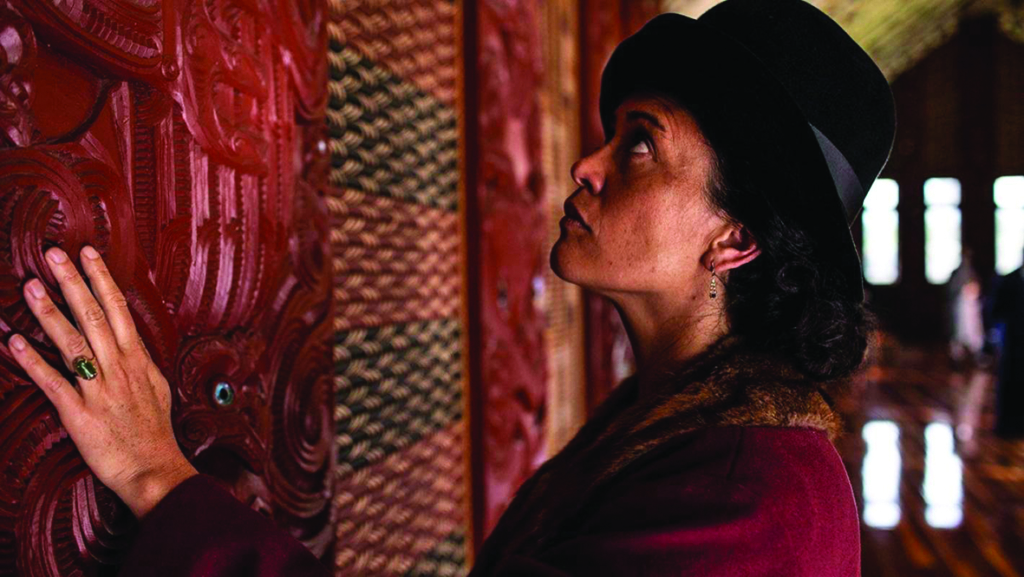
Robertson and Jones’ film ends on a triumphant note with a postscript explaining the impact of the 1975 land march, but it is the images of Whina in her garden – connected to the land – that linger. The importance of land, or whenua, is a central theme uniting each of the film’s timelines and iterations of its central figure. Early on in the film, police ride onto Māori land and demand to know where a then-teenage Whina is; she’s soon found filling in the drainage of a Pākehā tenant farmer. Temporarily imprisoned for this act of resistance, she defiantly cries out, ‘It’s Māori land, not yours!’ This marks the beginning of a quest to protect Māori whenua that consumes the rest of Whina’s life.
Robertson and Jones’ film ends on a triumphant note with a postscript explaining the impact of the 1975 land march, but it is the images of Whina in her garden – connected to the land – that linger.
In Whina,this same land is beautifully shot by veteran DOP Leon Narbey, who first worked as a cinematographer on the TV documentary Te Matakite o Aotearoa: The Māori Land March (Geoff Steven, 1975);[12]Footage from Steven’s documentary is used in Whina to show protesters walking across Auckland’s Harbour Bridge and arriving in Wellington. To watch the documentary in full, see ‘Te Matakite o Aotearoa – The Māori Land March’, NZ On Screen, <https://www.nzonscreen.com/title/te-matakite-o-aotearoa-1975>, accessed 24 July 2022. through his lens, the North Island’s rolling hills, striking mountains and lush vegetation collectively become a character in the film. While Whina voices the importance of whenua throughout, Narbey’s cinematography ensures that no words are needed to explain why the land holds so much mana.
Seeing that Māori are continuing to lose their land, an adult Whina becomes a supporter of native affairs minister Āpirana Ngata’s land schemes in the early 1930s, not only organising and advising development schemes in the northern Hokianga but also performing much of the backbreaking work herself. Her clothes are often covered with dirt and mud, underscoring her connection to the land. In her later years, despite being in ill health, she is persuaded to lead the 1975 demonstration, in which she gives voice to the march’s slogan: ‘Not one more acre of Māori land will be stolen.’
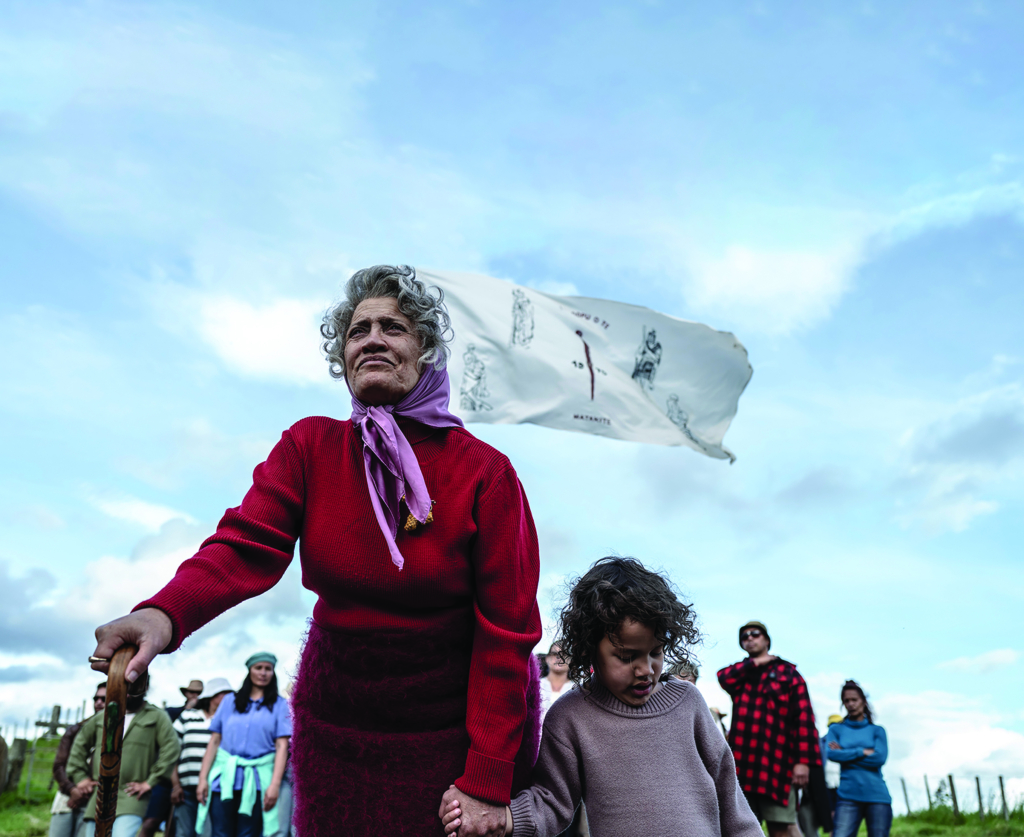
Whina also charts its protagonist’s love-life, exploring bitter and sweet times alike, but never allows it to pull focus from her individual achievements. While, as film scholar Karen Hollinger points out, ‘failed romance is a […] common component of the female biopic’ and ‘male biopic heroes commonly have the love of a loyal spouse to support them’,[13]Hollinger, op. cit., p. 162. Whina turns this trope on its head. In William Cooper (Vinnie Bennett), Whina finds someone who is equally in tune with the land and never threatened by his wife’s strength. Yet this relationship also leads to Whina being ostracised from her beloved home of Panguru: after standing in front of her community and – as ever, not being one to shirk an unpleasant task – revealing that she became pregnant with William’s baby while her first husband was dying of cancer, she is promptly run out of town, and remains in unofficial exile for a number of years. Cooper may have been crowned the Mother of the Nation, but the film always foregrounds the fact that she was a human being with desires and flaws.
If there’s one potential critique of Whina, it’s that Cooper achieved so much more that hasn’t made it into the movie. She was also, for instance, an incredibly astute businesswoman, who successfully ran the village store and, in 1947, became the first woman to be elected president of a New Zealand rugby union branch.[14]See King, op. cit. Of course, some omissions were unavoidable given that Robertson, Jones and co-writer James Lucas had to condense and compress her ninety-eight years to fit into a less-than-two-hour timeframe. Biography is about more than just the facts of a person’s life: filmmakers often have to depart from the factual and emphasise particular traits in order to generate a desired atmosphere and create a consistent character.[15]See Robert A Rosenstone, History on Film/Film on History, Pearson, Harlow, UK, 2006, p. 91. While not all of Cooper’s life made it into the film and various dates and events have been shifted, the movie is still able to capture her dynamic presence and her quest to better Māori lives. The ability to capture both public and private sides of Cooper was no doubt aided by the close working relationship the filmmakers developed with her family, including a number of her children and grandchildren living in Panguru.[16]The producers, actors and directors developed a close working relationship with Cooper’s family members over the course of making the film. See Tainui Stephens, ‘Whina – Doing Justice to an Icon’, E-Tangata, 26 June 2022, <https://e-tangata.co.nz/arts/whina-doing-justice-to-an-icon/>; and Aroha Awarau, ‘Director Paula Whetu Jones on Telling Dame Whina’s Story’, Woman, 12 June 2022, <https://womanmagazine.co.nz/director-paula-whetu-jones-on-telling-dame-whinas-story/>, both accessed 24 July 2022.
Cooper helped shape the country I grew up in; yet, having been born after the 1975 land march as well as having attended school at a time when New Zealand history was rarely taught, I was only vaguely familiar with her name prior to seeing the film. Discussions with friends yielded similar results: yes, they knew about the movie, Whina, but couldn’t really say anything about the real-life figure. Even Jones, the film’s co-director, has admitted that, before coming onto the project, she knew little about Cooper beyond an indistinct recollection of the land march.[17]See Mana Wikaire-Lewis, ‘Whina Writer “in Awe” of “The Mother of the Nation”’, Te Ao – Māori News, 23 June 2022, <https://www.teaomaori.
news/whina-writer-awe-mother-nation>, accessed 26 July 2022. Changes to Aotearoa’s history curriculum are currently underway, with the goal that ‘all ākonga [students] leave school or kura with an understanding of our histories, and how they have shaped our nation’.[18]‘Aotearoa New Zealand’s Histories and Te Takanga o Te Wā’, New Zealand Ministry of Education website, updated 21 March 2022, <https://www.education.govt.nz/our-work/changes-in-education/aotearoa-new-zealands-histories-and-te-takanga-o-te-wa/>, accessed 27 July 2022. Emphasis added. Through this process, Cooper will undoubtedly find her rightful place in the curriculum and at long last be introduced to all young New Zealanders. In the meantime, this compelling biopic can take her story beyond Aotearoa’s shores, and bring her to life for those too young to have witnessed her enduring struggle for her people and her country.
Endnotes
| 1 | This was the title conferred on her by the Maori Women’s Welfare League in the late 1950s; see Michael King, ‘Cooper, Whina’, Te Ara – The Encyclopedia of New Zealand, 2000, <https://teara.govt.nz/en/biographies/5c32/cooper-whina>, accessed 27 July 2022. |
|---|---|
| 2 | ibid. |
| 3 | See Virginia Winder, ‘How I Got the Shot: Whina Cooper and the Image That Became Iconic’, Stuff.co.nz, 20 August 2022, <https://www.stuff.co.nz/taranaki-daily-news/news/300665840/how-i-got-the-shot-whina-cooper-and-the-image-that-became-iconic>, accessed 12 December 2022. |
| 4 | Karen Fox, Māori and Aboriginal Women in the Public Eye: Representing Difference, 1950–2000, ANU E Press, Canberra, 2011, p. 143. |
| 5 | See Karen Hollinger, Feminist Film Studies, Routledge, London & New York, 2012, pp. 158–9. |
| 6 | Karen Pickering, ‘Australia’s Sons: Looking for Women in Australian Biopics’, Metro, no. 181, Winter 2014, p. 89. |
| 7 | For an overview of New Zealand’s female-focused literary biopics, see Hilary Radner, ‘Screening Women’s Histories: Jane Campion and the New Zealand Heritage Film, from the Biopic to the Female Gothic’, in Alistair Fox, Barry Keith Grant & Radner (eds), New Zealand Cinema: Interpreting the Past, Intellect, Bristol, UK, 2011, pp. 257–75. |
| 8 | Paula Whetu Jones, in ‘[Film Interview] Whina: Paula Whetu Jones Interview’, Subculture Media, 29 June 2022, <https://subcultureentertainment.com/2022/06/film-interview-whina-paula-whetu-jones-interview/>, accessed 24 July 2022. |
| 9 | See Myjanne Jensen, ‘New Zealand Screen Legend Talks About Her New Movie, Whina’, The Northland Age,23 June 2022, <https://www.nzherald.co.nz/northland-age/news/new-zealand-screen-legend-talks-about-her-new-movie-whina/MXDDHPURLES7SIW6OPRO7IZZFY/>, accessed 1 August 2022. |
| 10 | See King, op. cit. |
| 11 | Dennis Bingham, Whose Lives Are They Anyway? The Biopic as Contemporary Film Genre,Rutgers University Press, New Brunswick, NJ & London, 2010, p. 10. |
| 12 | Footage from Steven’s documentary is used in Whina to show protesters walking across Auckland’s Harbour Bridge and arriving in Wellington. To watch the documentary in full, see ‘Te Matakite o Aotearoa – The Māori Land March’, NZ On Screen, <https://www.nzonscreen.com/title/te-matakite-o-aotearoa-1975>, accessed 24 July 2022. |
| 13 | Hollinger, op. cit., p. 162. |
| 14 | See King, op. cit. |
| 15 | See Robert A Rosenstone, History on Film/Film on History, Pearson, Harlow, UK, 2006, p. 91. |
| 16 | The producers, actors and directors developed a close working relationship with Cooper’s family members over the course of making the film. See Tainui Stephens, ‘Whina – Doing Justice to an Icon’, E-Tangata, 26 June 2022, <https://e-tangata.co.nz/arts/whina-doing-justice-to-an-icon/>; and Aroha Awarau, ‘Director Paula Whetu Jones on Telling Dame Whina’s Story’, Woman, 12 June 2022, <https://womanmagazine.co.nz/director-paula-whetu-jones-on-telling-dame-whinas-story/>, both accessed 24 July 2022. |
| 17 | See Mana Wikaire-Lewis, ‘Whina Writer “in Awe” of “The Mother of the Nation”’, Te Ao – Māori News, 23 June 2022, <https://www.teaomaori. news/whina-writer-awe-mother-nation>, accessed 26 July 2022. |
| 18 | ‘Aotearoa New Zealand’s Histories and Te Takanga o Te Wā’, New Zealand Ministry of Education website, updated 21 March 2022, <https://www.education.govt.nz/our-work/changes-in-education/aotearoa-new-zealands-histories-and-te-takanga-o-te-wa/>, accessed 27 July 2022. Emphasis added. |
